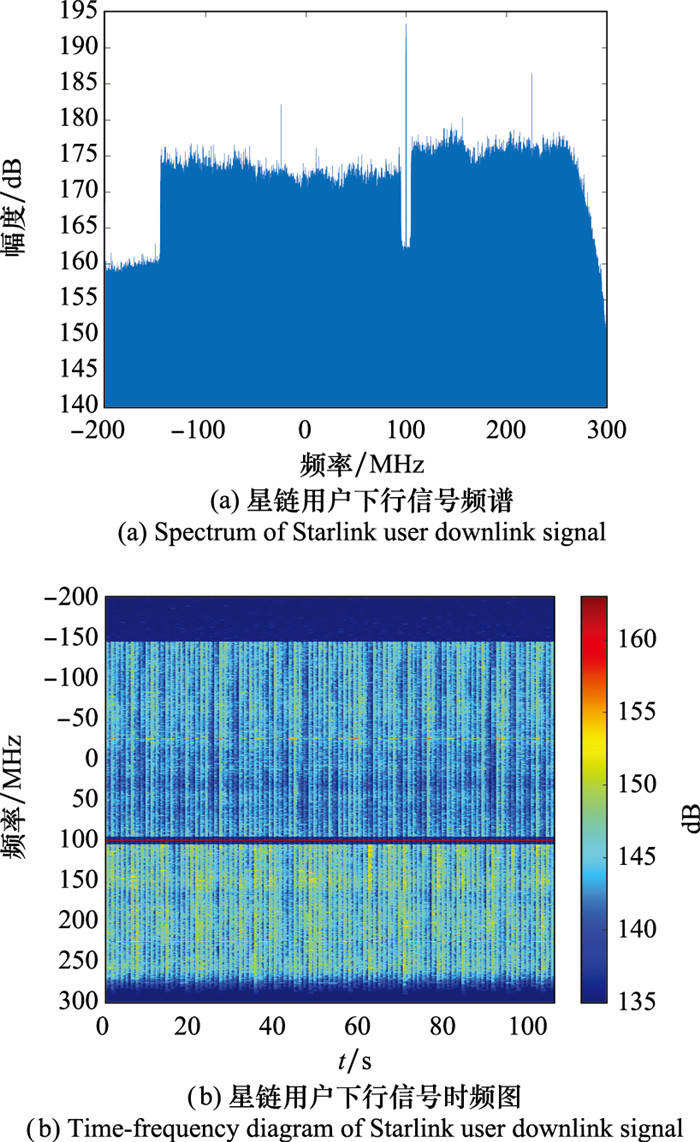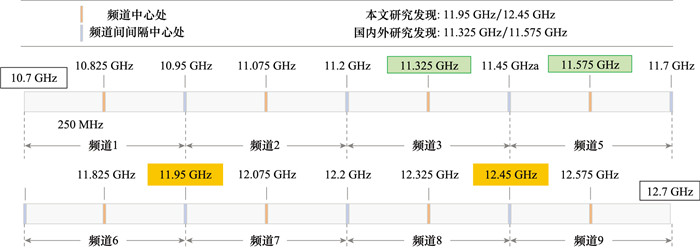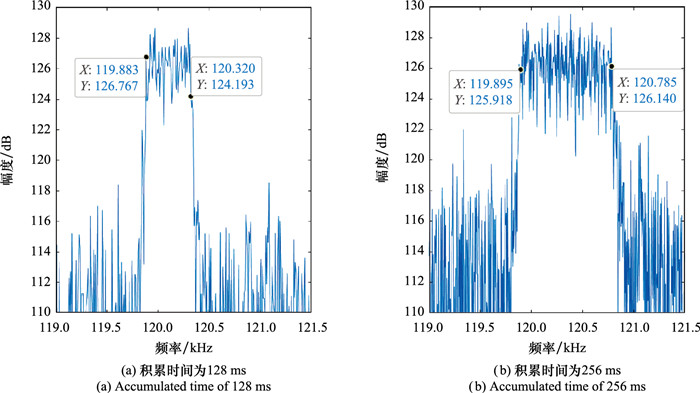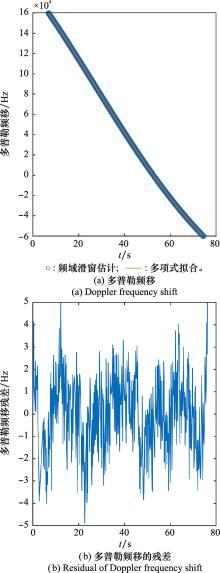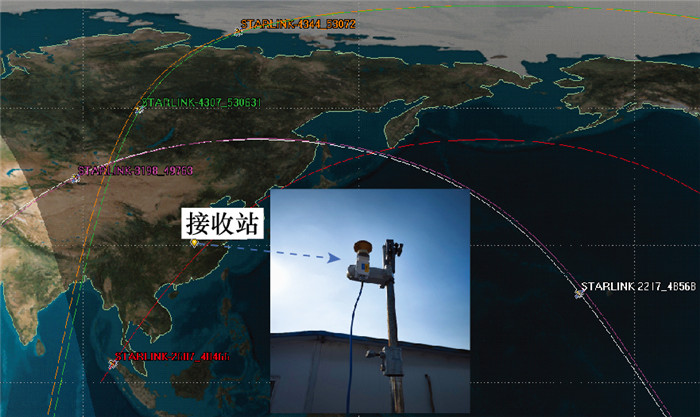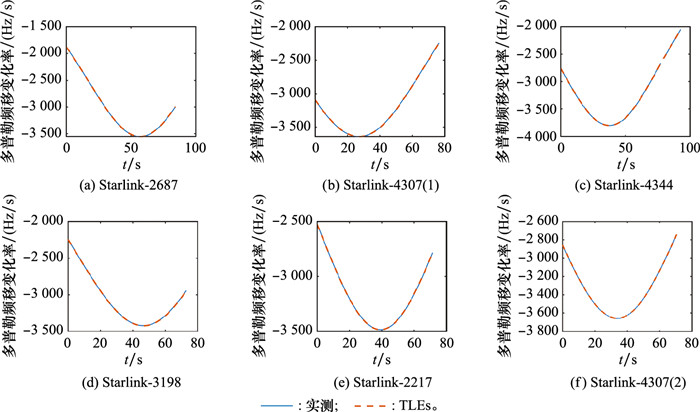Systems Engineering and Electronics ›› 2024, Vol. 46 ›› Issue (8): 2535-2545.doi: 10.12305/j.issn.1001-506X.2024.08.01
• Electronic Technology •
Doppler positioning method and experiment based on Starlink beacon signal
Yiping YUAN1, Jianxin YI1,*, Xianrong WAN1, Caiyong HAO1,2
- 1. School of Electronic Information, Wuhan University, Wuhan 430072, China
2. Shenzhen Monitoring Station, The State Radio Monitoring Center, Shenzhen 518000, China
-
Received:2023-08-15Online:2024-07-25Published:2024-08-07 -
Contact:Jianxin YI
CLC Number:
Cite this article
Yiping YUAN, Jianxin YI, Xianrong WAN, Caiyong HAO. Doppler positioning method and experiment based on Starlink beacon signal[J]. Systems Engineering and Electronics, 2024, 46(8): 2535-2545.
share this article
| 1 |
PSIAKI M L , HUMPHREYS T E . GNSS spoofing and detection[J]. Proceedings of the IEEE, 2016, 104 (6): 1258- 1270.
doi: 10.1109/JPROC.2016.2526658 |
| 2 | 肖岭, 唐小妹, 李柏渝, 等. GNSS双接收机抗欺骗技术[J]. 国防科技大学学报, 2016, 38 (3): 45- 49. |
| XIAO L , TANG X M , LI B Y , et al. GNSS anti-spoofing technique based on dual-receiver[J]. Journal of National University of Defense Technology, 2016, 38 (3): 45- 49. | |
| 3 | DEHGHANIAN V , NIELSEN J , LACHAPELLE G . GNSS spoofing detection based on signal power measurements: statistical analysis[J]. International Journal of Navigation and Observation, 2012, 2012, 1- 8. |
| 4 |
PSIAKI M L . Navigation using carrier Doppler shift from a LEO constellation: transit on steroids[J]. Navigation, 2021, 68 (3): 621- 641.
doi: 10.1002/navi.438 |
| 5 | KASSAS Z Z M . Navigation from low-earth orbit[J]. Position, Navigation, and Timing Technologies in the 21st Century: Integrated Satellite Navigation, Sensor Systems, and Civil Applications, 2021, 2, 1381- 1412. |
| 6 |
PROL F S , FERRE R M , SALEEM Z , et al. Position, navigation, and timing (PNT) through low Earth orbit (LEO) satellites: a survey on current status, challenges, and opportunities[J]. IEEE Access, 2022, 10, 83971- 840002.
doi: 10.1109/ACCESS.2022.3194050 |
| 7 |
FARHANGIAN F , LANDRY J R R . Multi-constellation software-defined receiver for Doppler positioning with LEO satellites[J]. Sensors, 2020, 20 (20): 5866.
doi: 10.3390/s20205866 |
| 8 | RACELIS D, PERVAN B, JOERGER M. Fault-free integrity analysis of mega constellation-augmented GNSS[C]//Proc.of the 32nd International Technical Meeting of the Satellite Division of the Institute of Navigation, 2019: 465-484. |
| 9 | REID T, GUNNING K, PERKINS A, et al. Going back for the future: large/mega LEO constellations for navigation[C]//Proc.of the 32nd International Technical Meeting of the Satellite Division of the Institute of Navigation, 2019: 2452-2468. |
| 10 | KASSAS Z , MORALES J , KHALIFE J . New-age satellite-based navigation-STAN: simultaneous tracking and navigation with LEO satellite signals[J]. Inside GNSS Magazine, 2019, 14 (4): 56- 65. |
| 11 | FCC SPACE EXPLORATION HOLDINGS. FCC application for fixed satellite service by space exploration holdings[EB/OL]. [2023-04-28]. http://fcc.report/IBFS/SAT-LOA-20200526-00055. |
| 12 | SPACE EXPLORATION HOLDINGS, LLC, Application for modification of authorization for the SpaceX NGSO satellite system[EB/OL]. [2023-04-28]. http://licensing.fcc.gov/myibfs/forwardtopublictabaction.do?file_number=SATMOD2020041700037. |
| 13 | WORLDVU SATELLITES LIMITED. OneWeb non-geostationary satellite system[EB/OL]. [2023-04-28]. http://licensing.fcc.gov/myibfs/forwardtopublictabaction.do?file_number=SATLOI2016042800041. |
| 14 |
NARDIN A , DOVIS F , FRAIRE J A . Empowering the tracking performance of LEO-based positioning by means of meta-signals[J]. IEEE Journal of Radio Frequency Identification, 2021, 5 (3): 244- 253.
doi: 10.1109/JRFID.2021.3077082 |
| 15 | KHALIFE J , NEINAVAIE M , KASSAS Z M . The first carrier phase tracking and positioning results with Starlink LEO satellite signals[J]. IEEE Trans.on Aerospace and Electronic Systems, 2021, 58 (2): 1487- 1491. |
| 16 |
JARDAK N , ADAM R . Practical use of Starlink downlink tones for positioning[J]. Sensors, 2023, 23 (6): 3234.
doi: 10.3390/s23063234 |
| 17 | NEINAVAIE M, KHALIFE J, KASSAS Z M. Exploiting Starlink signals for navigation: first results[C]//Proc.of the 34th International Technical Meeting of the Satellite Division of the Institute of Navigation, 2021: 2766-2773. |
| 18 | NEINAVAIE M , KHALIFE J , KASSAS Z M . Acquisition, Doppler tracking, and positioning with Starlink LEO satellites: first results[J]. IEEE Trans.on Aerospace and Electronic Systems, 2021, 58 (3): 2606- 2610. |
| 19 | NEINAVAIE M, SHADRAM Z, KOZHAYA S, et al. First results of differential Doppler positioning with unknown Starlink satellite signals[C]//Proc.of the IEEE Aerospace Confe-rence, 2022. |
| 20 |
秦红磊, 张宇. 星链机会信号定位方法[J]. 导航定位学报, 2023, 11 (1): 67- 73.
doi: 10.3969/j.issn.2095-4999.2023.01.010 |
|
QIN H L , ZHANG Y . Positioning technology based on Starlink signal of opportunity[J]. Journal of Navigation and Positioning, 2023, 11 (1): 67- 73.
doi: 10.3969/j.issn.2095-4999.2023.01.010 |
|
| 21 | SOLTANI M N , LZADI-ZAMANABADI R , WISNIEWSKI R . Reliable control of ship-mounted satellite tracking antenna[J]. IEEE Trans.on Control Systems Technology, 2010, 19 (1): 221- 228. |
| 22 | WU Z L , HUANG X X , DU M , et al. Intra-pulse recognition of radar signals via bicubic interpolation WVD[J]. IEEE Trans.on Aerospace and Electronic Systems, 2023, |
| 23 | 雷磊. 基于时频分析的线性调频信号检测与参数估计[D]. 西安: 西安电子科技大学, 2012. |
| LEI L. Detection and parameters estimation of LFM signal based on time-frequency analysis[D]. Xi’an: Xidian University, 2012. | |
| 24 | ISLAM M N, SPITZER T, HALLETT J, et al. Doppler estimation for passive RF sensing method in space domain awareness [C]//Proc.of the Military Communications and Information Systems Conference, 2020. |
| 25 | 史蒂文·凯. 统计信号处理基础: 估计与检测理论, 卷Ⅰ[M]. 北京: 电子工业出版社, 2014: 136- 139. |
| KAY S M . Fundamentals of statistical signal processing, volume Ⅰ[M]. Beijing: Publishing House of Electronic Industry, 2014: 136- 139. | |
| 26 | 张海军. 基于最大似然法的正弦信号频率估计研究[D]. 乌鲁木齐: 新疆大学, 2003. |
| ZHANG H J. Study on sinusoidal frequency estimation based on maximum likelihood estimator[D]. Urumqi: Xinjiang University, 2003. | |
| 27 | BLAZQUEZ-GARCIA R, UMMENHOFER M, CRISTALLINI D, et al. Passive radar architecture based on broadband LEO communication satellite constellations[C]//Proc.of the IEEE Radar Conference, 2022: 1-6. |
| 28 |
WEI D , ZHAO C Y . An accuracy analysis of the SGP4/SDP4 model[J]. Chinese Astronomy and Astrophysics, 2010, 34 (1): 69- 76.
doi: 10.1016/j.chinastron.2009.12.009 |
| 29 | CELESTRAK. Current supplemental two-line element sets.[EB/OL]. [2023-04-28]. http://celestrak.com/NORAD/elements/supplemental/. |
| 30 | 王萌, 马利华, 张丽荣, 等. 区域定位系统中高程辅助三星定位算法[J]. 上海交通大学学报, 2012, 46 (10): 1647-1651, 1657. |
| WANG M , MA L H , ZHANG L R , et al. Three-satellite positioning algorithm with altitude aiding for regional navigation satellite system[J]. Journal of Shanghai Jiao Tong University, 2012, 46 (10): 1647-1651, 1657. |
| [1] | Jiuyang LI, Min HU, Xuyu WANG, Jiahui XU, Feifei LI. Optimal control method for low thrust deorbit of the low earth orbit satellite based on ALPSO algorithm [J]. Systems Engineering and Electronics, 2021, 43(1): 199-207. |
| [2] | FENG Da-jun, XU Lu-ping, ZHANG Hua. Autonomous orbit determination based on pulsars and bi-satellite position system [J]. Journal of Systems Engineering and Electronics, 2011, 33(12): 2700-2705. |
| Viewed | ||||||
|
Full text |
|
|||||
|
Abstract |
|
|||||









